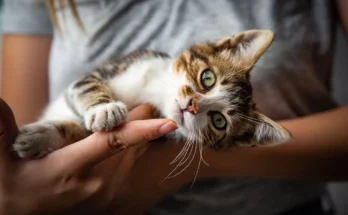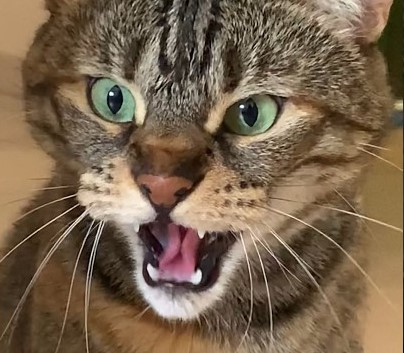Cats are known for being quiet and independent animals, which can make it hard to tell when something is wrong. Unlike humans or even dogs, cats often hide their pain or illness. This is a natural survival instinct, but it can delay the discovery of health problems. That’s why understanding your cat’s body language and knowing the common symptoms of sickness is so important. Recognizing the early signs of illness can help you get your cat the treatment they need before the condition worsens.
1. Changes in Body Language
One of the first signs a cat might be sick is a change in posture or movement. A healthy cat moves smoothly, walks normally, and lies down comfortably. A sick cat, however, may hunch its body, tuck its legs under tightly, or keep its head down. Cats in pain might lie in unusual positions or avoid movement altogether. Limping, stiffness, or trembling may also appear.
A cat that hides more often, avoids interaction, or becomes unusually clingy is also showing signs of illness. Some cats may stop grooming themselves, resulting in a messy, greasy, or matted coat. Others may overgroom a specific area, sometimes even to the point of hair loss, especially if they’re experiencing pain or skin issues.
2. Facial Expressions and Eyes
Pay attention to your cat’s facial expressions. Droopy eyelids, squinting, or glazed eyes can all be signs of discomfort. A sick cat may avoid eye contact or keep its eyes partly closed most of the time. Healthy eyes should be clear, open, and alert. Discharge, redness, or excessive tearing are warning signs of eye infections or other problems.
3. Eating and Drinking Habits
One of the clearest symptoms of a sick cat is a change in appetite or water intake. If your cat suddenly stops eating, eats significantly less, or refuses food altogether, it’s a cause for concern. Likewise, drinking much more or much less water than usual can point to problems like kidney disease or diabetes. Vomiting, especially if it happens repeatedly or is accompanied by other symptoms, is also a red flag.
4. Litter Box Changes
Monitoring your cat’s litter box behavior is a great way to keep track of their health. Sick cats may urinate more or less frequently, strain to go, or have diarrhea or constipation. You might also notice strong odors, blood in the urine or stool, or a change in color or texture. Avoidance of the litter box or urinating in unusual places may also be signs of stress or illness.
5. Breathing and Voice
Changes in breathing patterns—such as rapid breathing, panting, wheezing, or labored breaths—can indicate respiratory problems. Also, if your cat’s meows sound different, become louder, more frequent, or completely stop, it might be due to illness or discomfort.
Conclusion
Understanding your cat’s body language and symptoms of illness is essential for early detection and treatment. Watch for changes in posture, grooming, appetite, litter habits, and energy levels. If you notice anything unusual, don’t wait—contact a veterinarian for a proper diagnosis. Early care can make a big difference in your cat’s recovery and long-term health.



